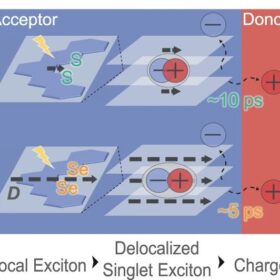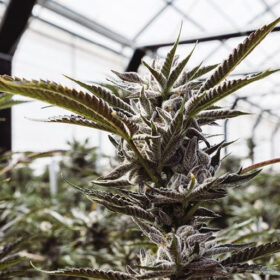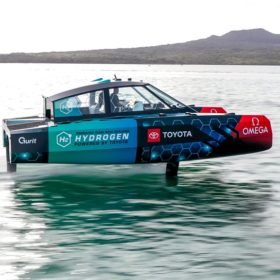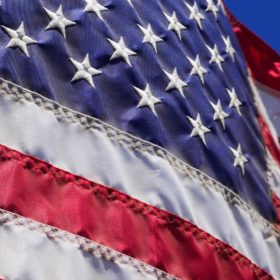Non-fullerene organic solar cell with selenium acceptor achieves 19% efficiency
Researchers in China have designed an organic solar cell the uses an acceptor based on selenium as an alternative to commonly utilized non-fullerene acceptors. The new acceptor enabled the cell to have reduced non-radiative recombination loss and improved dielectric constant.
Weekend read: High time for solar
Cannabis prohibition drove a culture of clandestine production in the past and solar helped growers to cultivate it at remote, off-grid sites. Now, as a global commercial cannabis market emerges, solar has an even bigger role to play.
REC Silicon to restart poly production at Moses Lake in 2023
REC Silicon says a cash injection from South Korea’s Hanwha will help it to resume fluidized bed reactor production at the Moses Lake polysilicon plant in the US state of Washington.
The Hydrogen Stream: Hydrogen-powered foiling chase boat
The US National Renewable Energy Laboratory has shared its findings on the use of perovskite materials to produce renewable hydrogen, while a number of entities have announced new projects in Europe, North America, and China.
Transatlantic silicon battery tie-up promises ready-to-use EV products
Slovakian business InoBat will use the patented silicon battery material manufactured by U.S. company Group14 Tech to offer bespoke products for the world’s biggest carmakers.
China’s cheap electricity crowds out foreign polysilicon
Imports from South Korea and the U.S. dwindled, year-on-year, ensuring Germany’s Wacker and the Malysian unit of Korean company OCI will supply the bulk of the world’s non-Chinese solar polysilicon this year.
REC Silicon could restart poly production at Moses Lake
The Norwegian polysilicon maker has been been frozen out of the Chinese solar market by political tensions between Beijing and the U.S. and mothballed its Washington State production line last year. However, two recent business agreements could change all that.
Covid-19 weekly round-up: Updates shed light on tough second quarter for solar industry firms
But Israeli inverter company Solaredge and Indian engineering, procurement and construction services provider Sterling and Wilson have both offered hope of a recovery in Europe as Chinese glass producer Xinyi said it kept the furnaces going throughout the worst of the pandemic.
REC Silicon sells off last remnants of Moses Lake polysilicon
The Norwegian company mothballed its Washington State facility more than a year ago and is now reliant on semiconductor-grade poly and silane gas produced at its fab in Butte, Montana – a facility for which the business says it has received plenty of interest from potential purchasers.
Electric aircraft engines could take to the skies over Australia
Zero-emission, low-cost regional flights with just eight other sanitized folk and a disinfected pilot! Yes, Covid-19 is warping our view of the future but the successful electrically-powered maiden flight of a Cessna Caravan last week offers the potential for new modes of transport to support a wider economic recovery in Australia.






